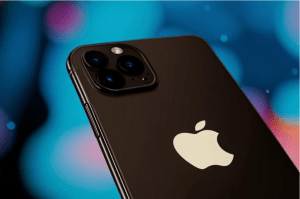![]() Apple’s got a patent for ultra-accurate tracking system
Apple’s got a patent for ultra-accurate tracking system
You know what a radar is, right? Deciphered into “radio detection and ranging,” it’s a system that, simply put, keeps track of things. Invented in 1935, at the outset, radars were used for military purposes exclusively, then became known as devices helping police catch speeding cars. Although after that, such systems have found numerous uses outside war-related and enforcement domains, most of us (laypeople) still associate radars with them. Well, in the realm of Apple, radar will soon be perceived as an integral part of a very convenient setup: the company’s been granted a patent for “Ultra-accurate Object Tracking Using Radar In Multi-object Environment.”
Gesture-based control of all things Apple? With a stylus, apparently
Gesture detection and interpretation systems aren’t new. As a matter of fact, Apple is one of the veterans of this game: its iPhones and iPads have been equipped with LiDARs (same as radar but uses light instead of radio waves) since 2020, and their purpose is just that, detection and ranging. In less consumer sectors, Statista projects the gesture recognition tech market to grow to over $15 billion by 2026. So, does Apple actually seek to introduce something new?
It would seem so. As the company explains in its patent application, radars are great, but when you need ultimate accuracy, detection at the level of fractions of millimeters, they don’t cut it. Moreover, when there are several components participating in a movement, things get even more complicated.
The solution Apple engineers have come up with suggests mounting a transmitter into a device that’s core to the gesture-based control system. Put simply, your future Mac, for example, will have radars built-in, but to really conduct it as an orchestra, you’ll have to take the stylus in your hand.
Highly likely, the system will cover the entire Apple ecosystem, so stylus will actually become one of the key elements thereof. But don’t rush to buy one now, those available currently don’t have that transmitter in them. Moreover, it may take years from patent to mass production. The idea is interesting though, so we’ll keep it on our radar and share what we learn.



